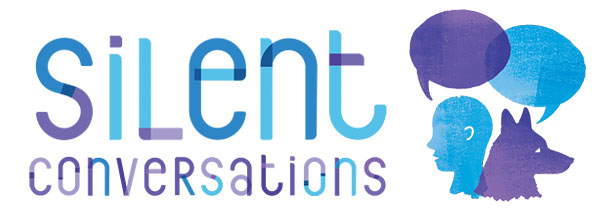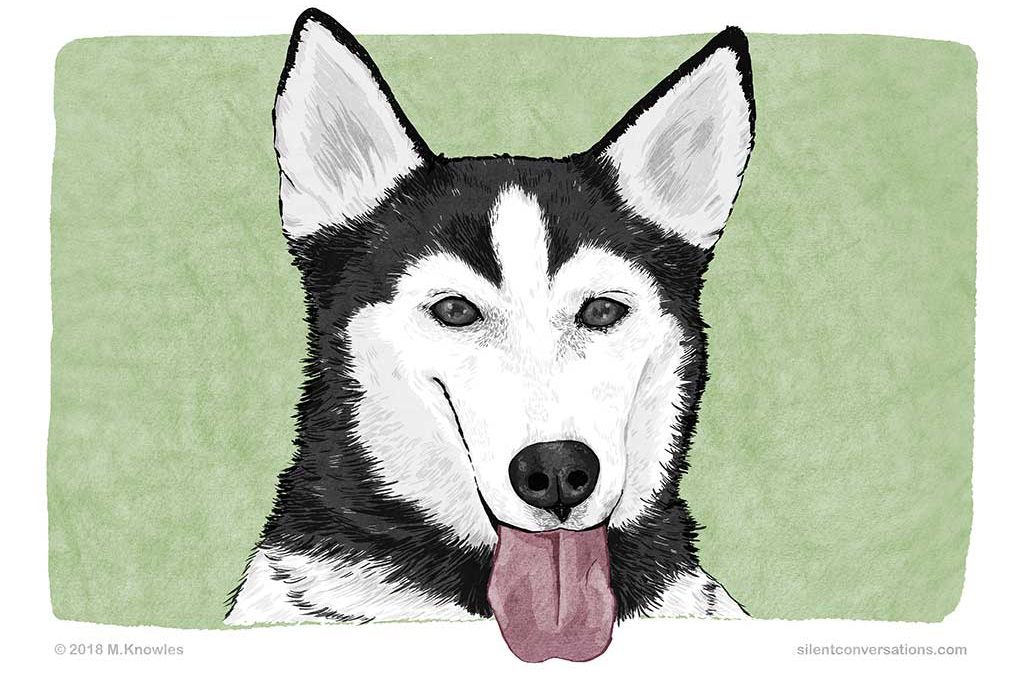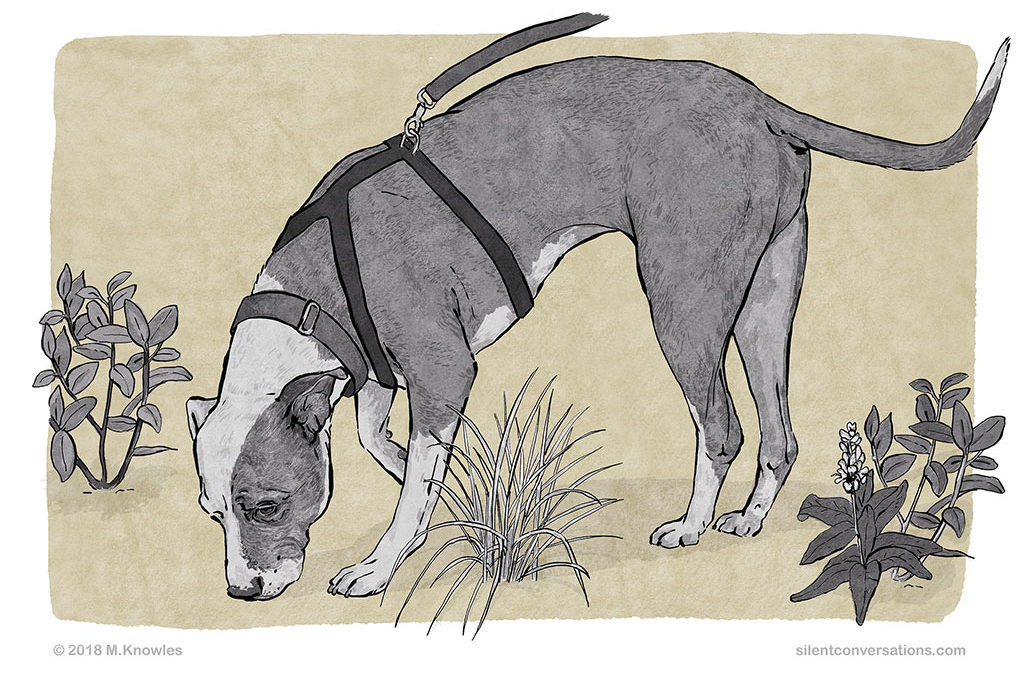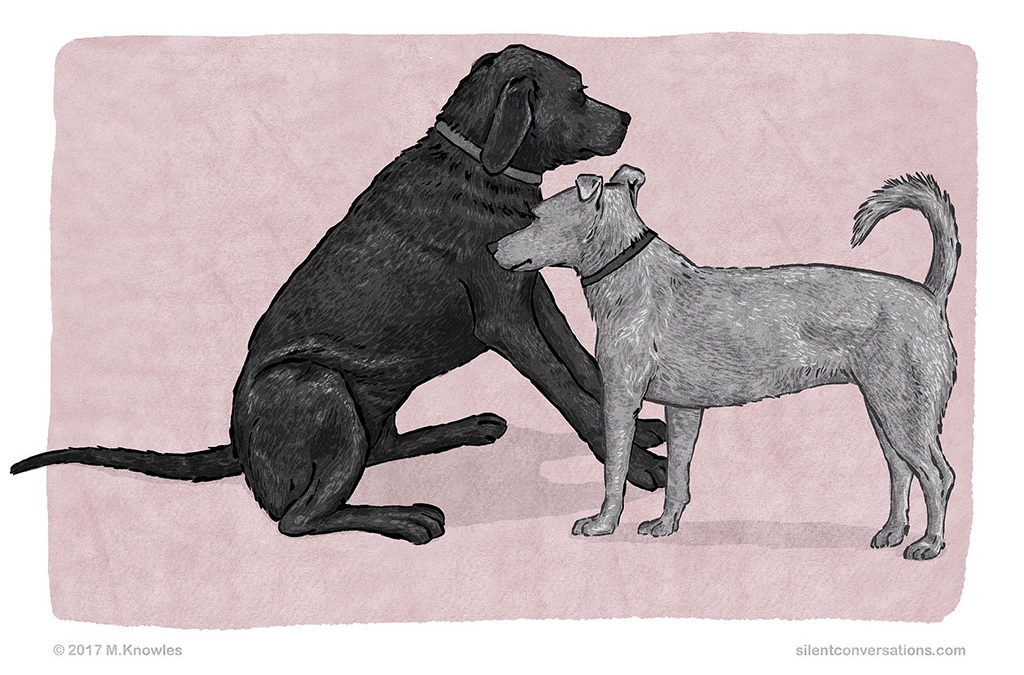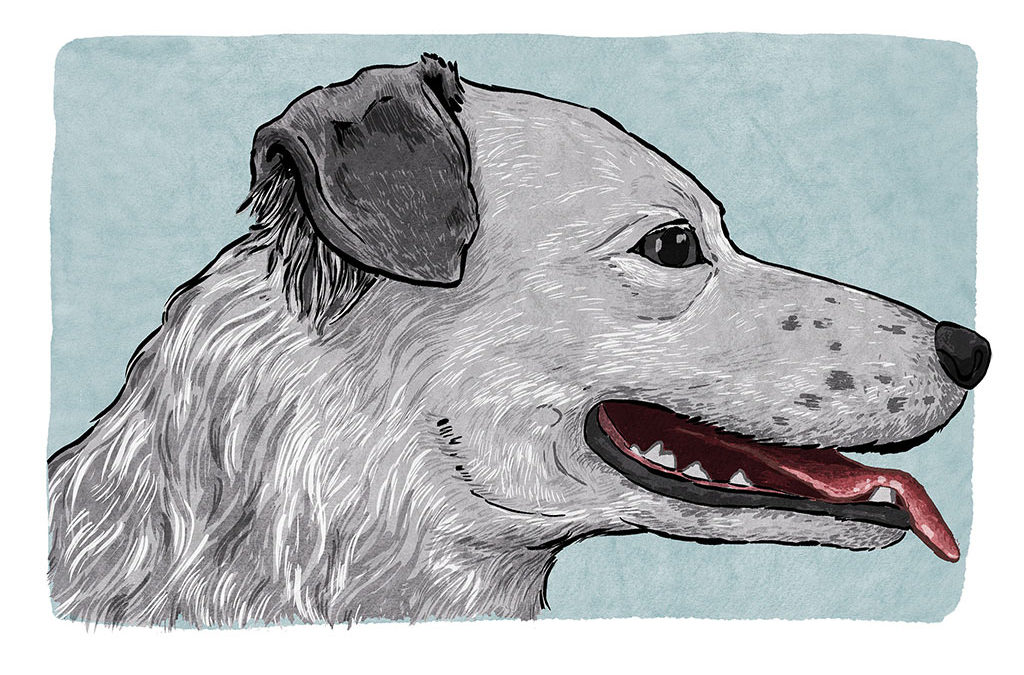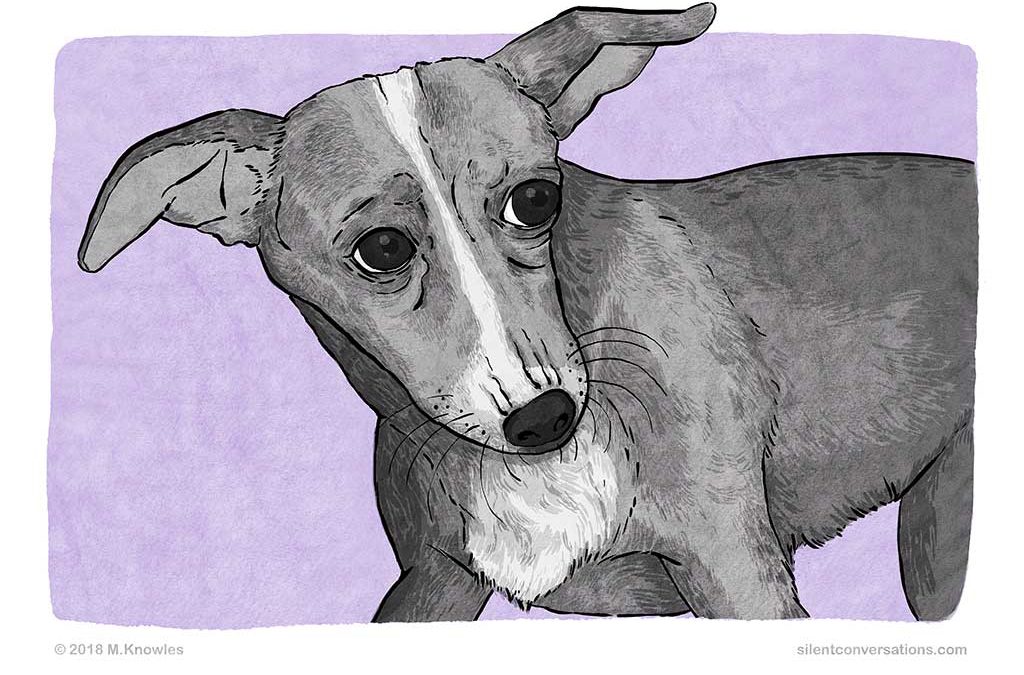
Eyes – Hard Eye – Dog Body Language
Eyes – Hard Eye – Dog Body Language
The term ‘hard eye’ in dog body language refers to situations where a dog gives direct eye contact, characterized by an intense hardened, fixed, glassy stare. Eye contact is not polite in dog communication and is used for the purpose of a warning or as a direct threat to another party, with intent of further action should the party not heed the warning by moving away.
Hard eye can be difficult to describe; there is a lack of analytical language to convey precisely how the eyes appear. If you have been on the receiving end of ‘hard eye’, it is something that you will sense, however difficult it is to put in words. The eyes seem to glaze over and become colder, and there is a definite change in their appearance, as well as a lack of warmth.
Hard eye is normally displayed along with other body language: the eyes will appear large and wide, the dog’s mouth may close, or the dog may already be displaying an agonistic pucker (showing teeth). Tense areas may be apparent on the face, with the skin pulled back or deep furrows showing in areas. The ears may be positioned slightly to the side or moved forward with tension, while the whiskers may look flared or appear to be pushed forward. The dog’s body might orient towards the party receiving the stare, and the whole body could seem tense. Most commonly, the dog will appear still and frozen. A hard stare and freeze may be the last warning before further escalation or even a bite.
The hard stare and freeze can be prolonged in some instances, but in other situations it may occur so quickly that it is missed, with people not realizing a warning was given before a bite. There is a quick glaze, along with a freeze of the body, and, within seconds, a fracas breaks out between two dogs, with the human not realizing which dog instigated it with a stare.
This is why it is important to consider how you use eye contact when interacting with a dog, especially one that is unknown to you. If you wish to be polite, it is crucial to try to build trust by avoiding direct eye contact – especially in the first interactions. As well as being aware of your eye contact, make sure your body is positioned in a non-confrontational manner by turning your shoulder away, with your body facing side-on to the dog. It is polite to avoid staring by turning your head away slightly, using your peripheral vision to observe the dog. If you do give a little selected eye contact, do so for short periods with slightly squinted eyes, and you can also include some slow blinking. Most dogs have grown accustomed to receiving direct eye contact from humans, especially from family members with whom they may feel comfortable. Some dogs may not respond to direct eye contact favorably, especially from strangers, and may display their fear by barking or lunging at the person.
Here are a few examples of situations where a dog may display a hard eye:
- An adult dog is lying down on the ground, chewing on a toy. An adolescent dog is playing around with another toy across from the older dog. He throws his toy around clumsily, dropping it near the adult dog’s feet. The adolescent dog playfully stumbles over towards his dropped toy. The adult dog is wary of the younger dog coming closer and possibly attempting to take his toy instead of the one dropped, so he keeps the toy in his mouth, quickly stops chewing, and freezes. His ears go ever so slightly forward, his eyes become wider, and he gives a direct stare towards the adolescent dog, whilst keeping very still. The adolescent playfully paws in the direction of the adult and lets out a playful huff. Remaining frozen, the adult continues to give eye contact. His nose creases and he shows some of his front teeth. The adolescent averts his head slightly, does a lip lick, and turns away to pick up another toy, which is on the floor a little further away.
- A person is standing between a couple of dogs and giving each of them attention. Another dog approaches the group. One of the dogs receiving attention freezes for a second. Whilst orienting towards the approaching dog, he gives direct eye contact with a hard stare. This happens in an instant. The person giving attention to the dogs is standing behind the dog that is giving the stare, and she does not realize this is occurring. Unfortunately, by engaging with the approaching dog, she continues to encourage him to come closer. The dog that is giving the stare lunges and snaps at the approaching dog, which reacts and snaps back. All of this happens so quickly. The person shouts at the approaching dog, whereupon both dogs move away and do a shake off.
- There are a few dogs hanging out in a dog park. One of the dogs, a small terrier mix, prefers to not interact with the dogs running around and chooses to lie down in the shade near where the people are sitting. After a few minutes, a poodle mix decides to walk towards the terrier, which is still lying in the shade. He approaches the terrier from behind and gently scents his rear end and back. Although the terrier remains lying down, his body stiffens, his head rises slightly, and his ears move a little to the side. He becomes very still and his eyes seem wide. The terrier does not turn to look at the dog sniffing him but remains still. The poodle now carefully walks in a slight curve to the front of the terrier. With eyes somewhat squinted, and ears a little back, he stretches out to carefully sniff the terrier around the face. The terrier turns his head away slightly; his eyes remain wide and have a hard appearance, and a bit of ‘whale eye’ is visible. The reason for the appearance of ‘whale eye’ (the sclera or whites of the eyes becoming pronounced) is that the dog is trying not to give direct eye contact but does not feel comfortable taking his eye off the subject that is causing him concern. The poodle continues to air sniff near the terrier’s face. The terrier still frozen, and revealing hard eyes, now lifts his lip, showing some teeth. The poodle does a head turn and lifts his paw, then decides to carefully turn and walk away from the terrier.
These are just a few examples; there may be many more. Start observing to see if you can notice ‘hard eye’ in different contexts. As discussed below, interpretations such as the above examples should not be attempted without careful observation and consideration of all aspects of the situation.
A few notes to consider when observing dog body language:
Observation before interpretation
Interpretations should be offered only once you have observed the complete interaction and taken note of the wider picture. To offer an unbiased interpretation of the body language, observe and take note of the situation, taking into account the dog’s whole body, the body language signals and environment first before offering an interpretation. List all the body language you see in the order that it occurs; try to be descriptive as possible without adding any emotional language. For instance, saying a dog looks happy is not descriptive and would be seen as an interpretation rather than an observation.
You could however list what you observe: ears to the side, eyes almond shaped, slight shortening of the eye, mouth open, long lips, tongue out, body moving loosely, body facing side-on, tail wagging at a slow, even pace at body level.
From the observation I could interpret that the dog seems relaxed or comfortable. I still prefer to say relaxed rather than happy, as I feel you will truly never know exactly what the dog may be feeling on the inside emotionally. It is quite likely the dog may be feeling happy, but I prefer to comment on how the dog is behaving in response to the situation rather than presuming internal emotional states.
The importance of viewing body language within context
Interpretations can vary depending on the context. It is possible for certain body language to be used in different contexts and have subtle differences in meaning within those contexts. Individual body language signals should not be observed in isolation; the wider picture should be considered. Take note of what the dog’s body as a whole is saying. Keep in mind each dog is an individual with varying skills and experiences. What may be typical for one individual may not be for another. In order to observe body language in context, consider the following: the situation, body language signals, the body language expressed by all parts of the dog’s body, the environment, and the individuals involved. It is worth noting how the body language changes with feedback from the environment or the other individuals interacting.
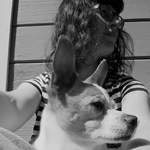
Martha Knowles
Author
My vision is to create a community of dog guardians who share their observations and interpretations of their dogs’ silent conversations. Hopefully, these experiences and stories will provide some insight into dog communication, which is often overlooked by the untrained eye because it is unfamiliar to humans. We are accustomed to communicating mainly with sound, so we are not attuned to the silent subtle gestures and body language used by dogs to communicate. If you take the time to observe, you will start to see these 'silent conversations' going on around you. My dream is for dog communication to become common knowledge with all dog guardians and as many people as possible. Surprisingly, there are still some professionals working in various dog-related careers who are uneducated about dog body language. Greater awareness of how dogs communicate will help to provide better understanding and improve the mutual relationship between dogs and humans. This will promote safer interactions between our two species and hopefully remove some of the expectations placed on dogs within human society. I would like dog guardians to feel empowered with their knowledge of dog communication so that they can be their dogs’ advocates and stand up for themselves and their dogs when it really matters.
